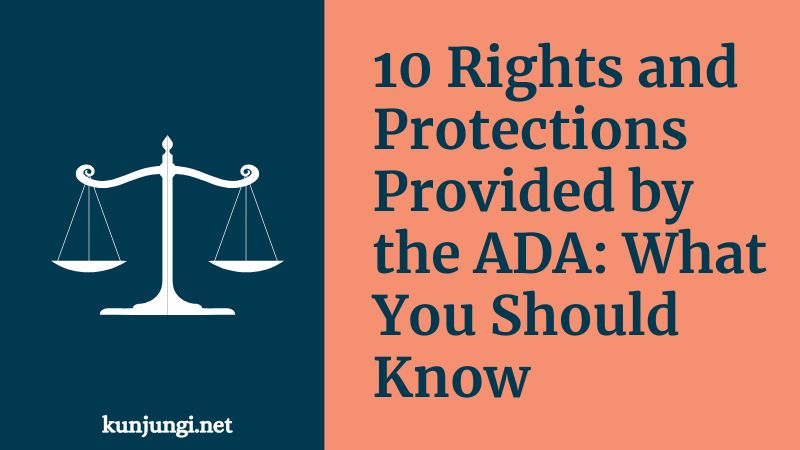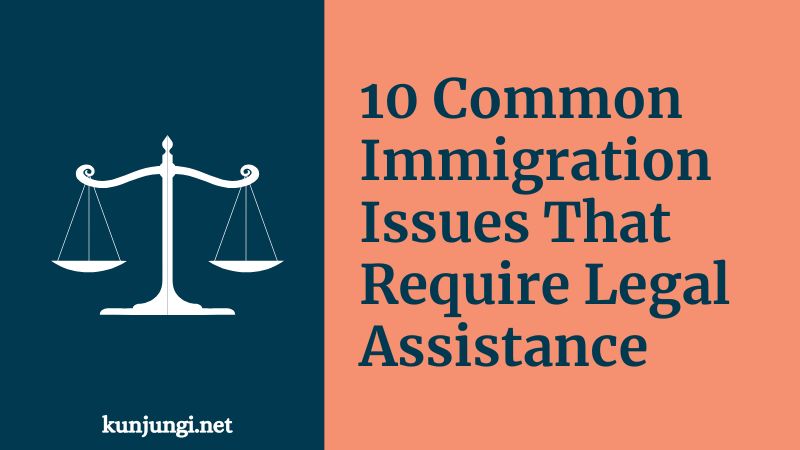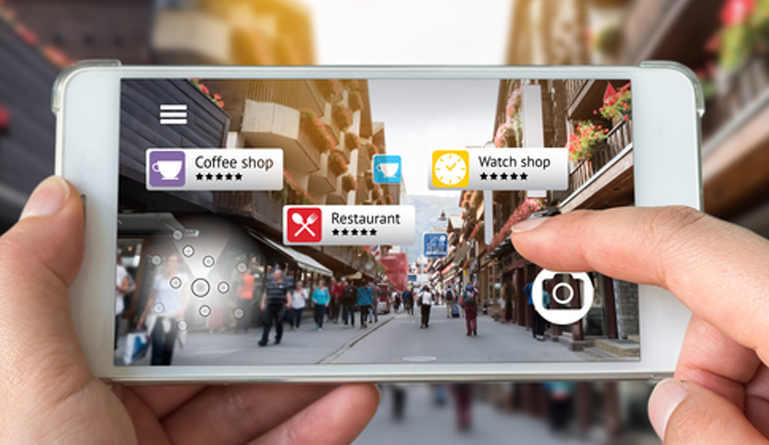A civil lawyer, also known as a civil litigation attorney, is a legal professional who specializes in representing individuals, organizations, or entities in non-criminal legal matters. These lawyers handle a wide range of cases, including personal injury claims, contract disputes, family law matters, and real estate disputes, among others. Their primary role is to advocate on behalf of their clients, navigate the complexities of civil law, and work towards achieving favorable outcomes in legal disputes. Civil lawyers play a crucial role in the legal system by helping individuals seek justice, resolve conflicts, and protect their rights and interests through legal means.
To excel in their profession, civil lawyers must possess strong research and analytical skills, excellent communication abilities, and the capacity to develop persuasive legal arguments. They often engage in negotiations, mediation, and, when necessary, courtroom litigation to represent their clients effectively. Whether it’s securing compensation for an injured party, resolving a contractual dispute, or guiding clients through family law proceedings, civil lawyers serve as dedicated legal advocates committed to ensuring that the principles of justice and fairness are upheld in civil matters.
What is the highest salary for a civil lawyer?
Civil lawyers, also known as civil litigation attorneys, play a vital role in representing clients in non-criminal legal matters, ranging from disputes over contracts and property to personal injury cases. The salary of a civil lawyer can vary significantly based on factors such as experience, location, and specialization. In this article, we’ll delve into the factors that influence the salaries of civil lawyers and explore the highest salary potential in this legal field.
Factors Influencing Civil Lawyer Salaries
-
Experience: Like many professions, experience plays a significant role in determining a civil lawyer’s salary. Generally, more experienced lawyers with a substantial track record of successful cases tend to command higher salaries.
-
Location: The geographic location where a civil lawyer practices law can greatly impact their salary. Lawyers practicing in major metropolitan areas or regions with a high cost of living typically earn higher salaries than those in smaller towns or rural areas.
-
Specialization: Some civil lawyers specialize in specific areas of civil law, such as corporate litigation, intellectual property, or medical malpractice. Specialized lawyers often command higher salaries due to their expertise in niche areas of law.
-
Firm Size: The size and reputation of the law firm where a civil lawyer works can influence their salary. Large, prestigious law firms often pay higher salaries to attract top legal talent.
-
Education and Credentials: A civil lawyer’s educational background and credentials, such as having graduated from a prestigious law school or obtaining board certification in their field, can contribute to higher earning potential.
The Highest Salaries for Civil Lawyers
While civil lawyer salaries can vary significantly, the highest earning civil lawyers often fall into the following categories:
-
Big Law Firms: Lawyers employed by large, international law firms, commonly referred to as “Big Law” firms, tend to earn some of the highest salaries in the legal profession. Partners at these firms can earn substantial incomes, often in the seven-figure range or higher.
-
Specialized Fields: Civil lawyers who specialize in high-demand and lucrative fields such as corporate law, intellectual property litigation, and securities law can command exceptionally high salaries, particularly if they work in major financial and business centers.
-
Experienced Trial Lawyers: Civil lawyers with extensive experience as trial attorneys, especially those handling high-stakes cases, may earn significant salaries. Their ability to secure favorable verdicts for clients can lead to substantial financial rewards.
-
Geographic Considerations: Lawyers practicing in cities with a high cost of living, such as New York City, San Francisco, or Washington, D.C., often earn higher salaries to compensate for the elevated living expenses in those areas.
It’s important to note that while some civil lawyers achieve impressive salaries, many lawyers in this field have earnings that fall within a broad range. Newer attorneys and those working in smaller firms or public interest organizations may have more modest incomes.
The highest salary for a civil lawyer is not fixed but can reach significant levels, especially for experienced lawyers with specialized skills and a strong track record of success. However, it’s essential to recognize that a lawyer’s salary is influenced by numerous factors, including location, experience, specialization, and firm size. Individuals considering a career in civil law should carefully evaluate their goals and interests to determine the best path for their legal career.
Why do most lawyers practice civil law?
The legal profession is diverse, with lawyers specializing in various areas of law, including criminal, family, tax, and civil law. While each specialization serves a unique purpose, civil law practice stands out as one of the most common areas of legal expertise. In this article, we will delve into the reasons why a significant number of lawyers choose to practice civil law and the factors that contribute to its prevalence.
1. Broad Scope of Civil Law:
Civil law encompasses a wide range of legal matters that affect individuals, businesses, and organizations in their daily lives. From contract disputes and personal injury cases to employment law and family law matters like divorce and custody, civil law covers a multitude of issues. This breadth of topics provides lawyers with ample opportunities to specialize in areas that align with their interests and expertise.
2. Client Demand:
The demand for civil law services is consistently high. Individuals and businesses frequently require legal assistance to navigate various aspects of their lives and operations. This demand ensures a steady flow of clients seeking representation in civil matters, making it an attractive field for lawyers.
3. Steady Case Flow:
Unlike criminal law, where cases can be sporadic and dependent on law enforcement actions, civil law cases tend to have a more predictable and steady flow. Lawyers practicing civil law often have a consistent workload, which can be advantageous for managing their practices.
4. Opportunities for Specialization:
Within civil law, there are numerous areas of specialization. Lawyers can focus on specific niches, such as real estate, intellectual property, or employment law. This allows them to develop deep expertise in a particular area and become sought-after specialists.
5. Long-Term Client Relationships:
Civil lawyers often build long-term relationships with their clients. They may represent individuals in multiple legal matters throughout their lives or provide ongoing legal counsel to businesses. These enduring relationships can be professionally and personally rewarding.
6. Potential for High Earnings:
Depending on their specialization and the complexity of cases, civil lawyers have the potential to earn high incomes. Complex litigation, corporate transactions, and high-stakes negotiations can lead to substantial legal fees.
7. Non-Adversarial Nature:
Civil law cases are generally non-adversarial, meaning that parties aim to reach negotiated settlements rather than engage in contentious courtroom battles. Many civil lawyers appreciate the opportunity to help clients find mutually beneficial solutions through negotiation and mediation.
8. Opportunities for Pro Bono Work:
Civil lawyers often have opportunities to engage in pro bono (volunteer) work, providing legal assistance to individuals and organizations that cannot afford legal representation. This allows lawyers to give back to their communities and make a positive impact.
9. Contribution to Society:
Civil lawyers play a vital role in upholding the rule of law and ensuring that individuals and businesses have access to justice. They help resolve disputes, protect rights, and promote fairness in society.
The prevalence of civil law practice can be attributed to a combination of factors, including the broad scope of civil law, client demand, opportunities for specialization, potential for high earnings, and the non-adversarial nature of many civil cases. Civil lawyers serve as essential advocates, assisting individuals and businesses in navigating complex legal matters and contributing to the functioning of a just and orderly society. The diverse and ever-evolving nature of civil law ensures that it will continue to be a prominent area of legal practice for many lawyers.
Which lawyer wins most cases?
The perception of lawyers winning most cases can be influenced by various factors, including their expertise, experience, specialization, and the nature of the cases they handle. However, it’s crucial to understand that no lawyer can guarantee a 100% success rate in every case they take on. Winning cases is not solely about the lawyer’s abilities but also about the specific circumstances and legal merits of each case. In this article, we will explore the factors that influence a lawyer’s success rate in winning cases.
1. Expertise and Specialization
Lawyers who specialize in specific areas of law tend to have a higher success rate in cases related to their field of expertise. For example, a criminal defense attorney who focuses on drug-related cases may have a better track record in those types of cases than in cases outside their specialization. Specialization allows lawyers to develop in-depth knowledge and experience in their chosen area, increasing their chances of success.
2. Experience
Experience is a crucial factor in a lawyer’s ability to win cases. Lawyers with years of practice have likely encountered a wide range of legal scenarios, developed effective strategies, and honed their negotiation and trial skills. This experience can give them a significant advantage in representing clients.
3. Preparation and Research
Successful lawyers invest considerable time and effort in preparing for cases. This includes conducting thorough legal research, gathering evidence, interviewing witnesses, and crafting persuasive arguments. A well-prepared lawyer is better equipped to present a compelling case in court or during negotiations.
4. Resources and Support
Lawyers in large law firms often have access to more extensive resources, including research tools, paralegals, and expert witnesses. These resources can enhance their ability to build a strong case. However, smaller firms and solo practitioners can still succeed through careful resource management and collaboration.
5. Client-Counsel Relationship
Effective communication and collaboration between a lawyer and their client are critical to a case’s success. Lawyers who establish strong client-counsel relationships can better understand their client’s needs, expectations, and goals, leading to more favorable outcomes.
6. Legal Merits of the Case
The underlying legal merits of a case play a significant role in its outcome. A lawyer can only work with the facts and evidence available. Some cases may have strong legal merits, while others may be challenging due to weak evidence or unfavorable legal precedents.
7. Negotiation Skills
Many cases are resolved through negotiation rather than litigation. Lawyers with strong negotiation skills can secure favorable settlements for their clients, even in cases where the outcome might be uncertain in court.
8. Adaptability
The ability to adapt to changing circumstances and legal developments is crucial. Successful lawyers stay up-to-date with evolving laws and precedents, adjusting their strategies as needed.
While some lawyers may appear to win most of their cases, it’s important to recognize that success rates can vary widely based on the factors mentioned above. Additionally, the definition of “winning” a case can vary from one client’s perspective to another’s. Ultimately, the best lawyer for a specific case is one who possesses the right expertise, experience, and skills to effectively represent the client’s interests. A lawyer’s success is not solely measured by their win-loss record but by their ability to provide the best possible representation for their clients in every case they handle.
What is civil trial law?
Civil trial law is a fundamental component of the legal system, playing a critical role in resolving disputes between individuals, businesses, organizations, and even government entities. Unlike criminal law, which addresses violations of criminal statutes, civil trial law deals with issues related to civil matters and disputes that primarily concern private rights, obligations, and liabilities. In this article, we will explore the essence of civil trial law, its key principles, and its significance in the legal landscape.
1. Defining Civil Trial Law:
Civil trial law is a branch of the legal system that governs the process of resolving disputes between parties through civil litigation. It encompasses a broad spectrum of legal matters, including contract disputes, personal injury claims, property disputes, family law cases, employment disputes, and more. In essence, it provides a structured framework for individuals and entities to seek legal remedies for civil wrongs or grievances.
2. Key Principles of Civil Trial Law:
-
Burden of Proof: In civil cases, the burden of proof typically rests on the plaintiff, who must demonstrate by a preponderance of the evidence that their claims are more likely true than not. This burden is lower than the “beyond a reasonable doubt” standard in criminal cases.
-
Resolution through Damages: Civil trial law often results in the awarding of monetary damages to the prevailing party as compensation for losses incurred. The goal is to make the injured party whole or to provide equitable relief when monetary damages are inadequate.
-
Right to a Jury Trial: In many civil cases, parties have the right to a trial by jury. However, some matters, such as small claims cases or certain family law issues, may be decided by a judge without a jury.
-
Preponderance of Evidence: Parties in civil trials present evidence, including documents, witness testimonies, and expert opinions, to support their claims or defenses. The judge or jury weighs this evidence to reach a verdict.
3. Significance of Civil Trial Law:
-
Access to Justice: Civil trial law ensures that individuals and entities have a mechanism to seek redress for civil wrongs or breaches of legal obligations. It provides a means for parties to have their grievances heard and resolved.
-
Protection of Rights: It safeguards the legal rights and interests of individuals and entities. Civil trial law allows parties to assert their claims, defend against allegations, and seek remedies when their rights have been violated.
-
Contract Enforcement: Civil trial law plays a crucial role in upholding the enforceability of contracts. It allows parties to seek legal remedies when contracts are breached or when disputes arise concerning their terms.
-
Resolution of Disputes: Civil trials provide a structured process for the resolution of disputes. They offer an opportunity for parties to present their cases, engage in negotiations, and, if necessary, have their disputes adjudicated by an impartial judge or jury.
-
Promotion of Accountability: Civil trial law encourages accountability by holding parties responsible for their actions or failures to fulfill legal obligations. This promotes a sense of fairness and discourages wrongful conduct.
Civil trial law is a fundamental pillar of the legal system that addresses a wide array of disputes between individuals, businesses, organizations, and more. It operates on the principles of fairness, equity, and the preponderance of evidence to ensure that parties have access to justice and the opportunity to resolve their civil grievances. By upholding rights, enforcing contracts, and promoting accountability, civil trial law plays an essential role in maintaining the rule of law and ensuring that civil disputes are justly resolved.
What are Civil law examples?
Civil law is a broad area of legal practice that deals with disputes between individuals, organizations, or entities that do not involve criminal charges. These disputes are typically resolved through legal proceedings aimed at compensating the injured party or enforcing specific legal rights. In this article, we’ll explore various examples of civil law cases and the diverse scenarios in which civil law is applied.
1. Personal Injury Cases
Personal injury cases are among the most common examples of civil law. They involve situations where one person’s negligence or wrongful actions result in harm or injury to another. Examples include car accidents, slip and fall incidents, medical malpractice, and product liability claims. In these cases, the injured party seeks compensation for medical expenses, pain and suffering, lost wages, and other damages.
2. Contract Disputes
Contract disputes are another prevalent category of civil law cases. These disputes arise when two parties have entered into a contractual agreement, and one party alleges that the other has breached the terms of the contract. Examples include disputes over business contracts, real estate transactions, employment agreements, and purchase agreements. In such cases, the injured party may seek damages or specific performance of the contract’s terms.
3. Family Law Matters
Civil law encompasses various family law matters, including divorce, child custody and visitation, spousal support, and property division. These cases involve legal proceedings to resolve disputes between family members and determine their rights and obligations.
4. Real Estate Disputes
Real estate disputes are common civil law cases that arise in property transactions. These disputes can involve issues such as boundary disputes, breach of real estate contracts, landlord-tenant conflicts, and property damage claims.
5. Torts and Negligence Cases
Tort law covers a wide range of civil law cases related to wrongful acts that cause harm to others. Examples include defamation (slander or libel), intentional infliction of emotional distress, and negligence cases like medical malpractice and accidents resulting from negligence.
6. Employment Law Cases
Civil law plays a significant role in employment-related matters. Cases in this category can involve wrongful termination, workplace discrimination, sexual harassment claims, wage disputes, and violations of labor laws.
7. Consumer Protection
Civil law includes cases related to consumer protection, where individuals or organizations file lawsuits against businesses for deceptive practices, breach of warranties, or fraud. These cases aim to protect consumers from unfair business practices.
8. Property Law and Boundary Disputes
Property law encompasses civil cases related to property rights, ownership, and disputes over boundaries, easements, and land use. These cases seek to establish legal ownership and resolve conflicts over property rights.
9. Probate and Estate Matters
Civil law covers probate and estate cases, which involve the distribution of a deceased person’s assets, settling debts, and addressing disputes over wills and inheritance.
10. Environmental Law
Environmental law cases address violations of environmental regulations, such as pollution, toxic waste disposal, and violations of environmental impact assessments. These cases aim to protect the environment and hold responsible parties accountable.
Civil law examples are diverse and encompass a wide range of legal scenarios where individuals, organizations, and entities seek to resolve disputes through legal proceedings. Whether it’s personal injury cases, contract disputes, family law matters, or environmental law cases, civil law plays a critical role in maintaining order and justice within society by providing a legal framework for resolving conflicts and protecting individuals’ rights.
Is Civil law better than criminal law?
Civil law and criminal law are two distinct branches of the legal system, each serving unique purposes and addressing different types of legal issues. It is not a matter of one being “better” than the other, but rather a question of which is more appropriate for a given situation. In this article, we will explore the differences between civil law and criminal law, their respective merits, and when one may be more suitable than the other.
Civil Law:
- Nature: Civil law deals with disputes between individuals, businesses, organizations, or government entities concerning private rights, obligations, and liabilities.
- Purpose: The primary goal of civil law is to provide a mechanism for individuals to seek legal remedies for civil wrongs or breaches of legal obligations.
- Burden of Proof: In civil cases, the burden of proof is typically on the plaintiff, who must establish their claims by a preponderance of the evidence, meaning that their claims are more likely true than not.
- Penalties: Civil cases can result in monetary damages or equitable remedies such as injunctions or specific performance.
- Right to a Jury Trial: In many civil cases, parties have the right to request a jury trial, though some cases may be decided by a judge without a jury.
- Examples: Common civil law cases include contract disputes, personal injury claims, property disputes, family law matters like divorce, and employment disputes.
Criminal Law:
- Nature: Criminal law pertains to offenses against the state and society, and it addresses violations of criminal statutes and regulations.
- Purpose: The primary purpose of criminal law is to protect society by imposing sanctions on individuals who engage in wrongful conduct.
- Burden of Proof: In criminal cases, the burden of proof is on the prosecution, which must prove the defendant’s guilt beyond a reasonable doubt.
- Penalties: Criminal cases can result in fines, probation, imprisonment, or even the death penalty, depending on the severity of the offense.
- Right to a Jury Trial: In most criminal cases, defendants have a constitutional right to a trial by jury.
- Examples: Common criminal law cases include theft, assault, murder, drug offenses, and white-collar crimes.
Comparing Civil and Criminal Law:
1. Purpose:
- Civil Law: Focuses on providing remedies and compensation to injured parties.
- Criminal Law: Aims to punish and deter wrongful conduct to protect society.
2. Burden of Proof:
- Civil Law: Requires a preponderance of evidence.
- Criminal Law: Requires proof beyond a reasonable doubt.
3. Penalties:
- Civil Law: Results in monetary damages or equitable remedies.
- Criminal Law: Leads to fines, imprisonment, probation, or more severe penalties.
4. Parties Involved:
- Civil Law: Involves private parties in disputes.
- Criminal Law: Involves the state (prosecution) versus the accused (defendant).
5. Right to a Jury Trial:
- Civil Law: Optional in many cases.
- Criminal Law: Generally guaranteed for defendants.
When to Choose Civil or Criminal Law:
- Choose Civil Law when seeking compensation or remedies for a civil wrong or breach of legal obligations.
- Choose Criminal Law when addressing conduct that violates criminal statutes, aiming to punish the offender and protect society.
Civil law and criminal law serve distinct purposes within the legal system, and neither is inherently “better” than the other. The choice between them depends on the nature of the legal issue at hand. Civil law addresses private disputes and seeks to provide remedies and compensation, while criminal law deals with offenses against society and aims to deter and punish wrongful conduct. Ultimately, the appropriateness of each branch of law depends on the specific circumstances and goals of a legal matter.
What is good about civil law?
Civil law serves as the backbone of legal systems in many countries, providing a structured framework for resolving disputes, protecting individual rights, and upholding justice. While there are various legal systems worldwide, civil law stands out for its unique characteristics and numerous advantages. In this article, we will explore what is good about civil law and the benefits it offers to individuals, organizations, and society as a whole.
1. Protection of Individual Rights
One of the fundamental strengths of civil law is its emphasis on protecting individual rights. Civil law systems prioritize the rights of individuals and aim to ensure that these rights are upheld and enforced. This includes the right to property, the right to a fair trial, and the right to seek compensation for damages suffered.
2. Clarity and Predictability
Civil law is known for its clarity and predictability. Legal rules and principles are typically codified in statutes and codes, providing a clear and accessible framework for resolving disputes. This transparency helps individuals and businesses understand their rights and obligations under the law.
3. Resolution of Disputes
Civil law provides an effective mechanism for resolving disputes between parties. When conflicts arise, individuals can turn to the civil court system to seek redress and a fair resolution. This process allows for the orderly settlement of disputes and helps prevent individuals from resorting to self-help or vigilante justice.
4. Accessible Legal Procedures
Civil law systems often prioritize accessibility to legal procedures. They aim to make the legal process understandable and navigable for individuals without legal backgrounds. This accessibility empowers individuals to seek legal remedies when needed, ensuring that justice is not limited to those with legal expertise.
5. Legal Certainty
Civil law systems promote legal certainty by providing clear rules and precedents. This certainty is essential for businesses and individuals to make informed decisions, plan for the future, and enter into contracts with confidence, knowing that their rights and obligations are defined by the law.
6. Role in Economic Development
A stable legal environment provided by civil law systems fosters economic growth and development. It encourages investment, entrepreneurship, and the establishment of businesses by providing a legal framework that protects property rights and enforces contracts.
7. Inquisitorial Nature
Civil law systems often feature an inquisitorial approach, where judges take an active role in investigating and establishing the facts of a case. This approach can lead to more comprehensive and impartial decision-making, ensuring that all relevant evidence is considered.
8. Adaptability
Civil law systems are adaptable and can evolve over time to address changing societal needs and values. Legal codes can be amended or revised to reflect new developments in areas such as technology, commerce, and human rights.
Civil law plays a crucial role in upholding justice, protecting individual rights, and promoting legal certainty in societies around the world. Its emphasis on clarity, predictability, and accessibility makes it a valuable tool for resolving disputes and ensuring that individuals and businesses can operate within a fair and stable legal framework. While no legal system is without its challenges, the benefits of civil law are evident in its contribution to a just and orderly society.
What is the goal of civil law?
Civil law serves as the cornerstone of the legal system, providing individuals and entities with a framework to resolve disputes, protect rights, and seek justice. Its overarching goal is to offer a fair and structured process for addressing civil wrongs and breaches of legal obligations. In this article, we will delve into the primary objectives and goals of civil law, emphasizing its role in upholding justice and facilitating the resolution of various legal disputes.
1. Protecting Individual Rights:
At its core, civil law is designed to safeguard the legal rights and interests of individuals. It ensures that individuals have the means to assert their claims when those rights are violated, whether in matters related to property, contracts, personal injury, or family issues like divorce and child custody.
2. Resolving Disputes:
Civil law provides a formalized process for resolving disputes between parties in a structured and organized manner. This includes the presentation of evidence, legal arguments, and, when necessary, a trial by judge or jury. The goal is to arrive at a fair and just resolution of the conflict.
3. Ensuring Accountability:
Civil law fosters accountability by holding parties responsible for their actions or failures to fulfill legal obligations. It discourages wrongful conduct by providing mechanisms through which individuals can seek legal remedies and redress for injuries or losses.
4. Promoting Fairness and Equity:
Equity and fairness are fundamental principles of civil law. The legal system strives to ensure that parties are treated justly, and that outcomes are based on principles of equity and fairness. This extends to contract enforcement, property rights, and the equitable distribution of assets in family law matters.
5. Compensating the Injured Party:
In cases involving personal injury, civil law seeks to compensate the injured party for their losses. This compensation aims to make the injured party whole by providing financial restitution for medical expenses, lost wages, pain, and suffering, among other damages.
6. Enforcing Contracts:
One of the significant goals of civil law is to enforce contracts and uphold the agreements made between parties. This ensures that contracts are legally binding and that parties are held to their contractual obligations.
7. Encouraging Settlements:
Civil law encourages parties to explore negotiated settlements and alternative dispute resolution methods, such as mediation or arbitration, to resolve disputes more efficiently and amicably.
8. Access to Justice:
Civil law guarantees access to justice for all individuals, regardless of their socioeconomic status. It provides a mechanism for individuals who may not have the means to enforce their rights independently.
The overarching goal of civil law is to provide individuals and entities with a fair and just system for resolving disputes, protecting rights, and seeking legal remedies. It serves as a fundamental pillar of the legal system, upholding principles of accountability, fairness, and equity. By facilitating the resolution of civil wrongs and breaches of legal obligations, civil law contributes to the orderly functioning of society and ensures that individuals have access to the justice they rightfully deserve.
What is used more commonly, common law or civil law?
The legal systems of the world can generally be categorized into two primary types: common law and civil law. These systems are distinguished by their origins, principles, and methods of legal interpretation. The choice between common law and civil law often depends on historical, cultural, and geographic factors. In this article, we will explore the prevalence of common law and civil law systems globally and examine which one is used more commonly.
Common Law:
Common law is primarily associated with countries that have historical ties to the British legal system. It is characterized by a reliance on judicial decisions and precedents to interpret and apply the law. In a common law system, the decisions of higher courts, especially appellate courts, establish legal precedents that lower courts are expected to follow when similar cases arise. This system places a strong emphasis on the principle of stare decisis, which means “to stand by things decided.”
Civil Law:
Civil law, on the other hand, is rooted in Roman law traditions and is characterized by a codified and structured set of legal principles and statutes. In civil law systems, the primary source of law is written legislation, and judges are expected to apply the law as written, without significant reliance on precedent. Legal codes and statutes in civil law countries are typically comprehensive and cover various areas of law, providing a clear framework for resolving legal disputes.
Global Prevalence:
The prevalence of common law and civil law systems varies around the world:
-
Common Law: Common law systems are more commonly found in English-speaking countries, including the United Kingdom, the United States, Canada, Australia, and several other nations that were once part of the British Empire. Additionally, some countries, such as India and South Africa, have incorporated elements of common law into their legal systems due to historical colonial influence.
-
Civil Law: Civil law systems are widespread in continental Europe, Latin America, Asia, and parts of Africa. Prominent examples of countries with civil law systems include France, Germany, Japan, Brazil, and Mexico. Civil law systems are also prevalent in many countries that were formerly part of the Napoleonic Code tradition.
Which Is Used More Commonly?
The prevalence of common law versus civil law systems is often influenced by historical and regional factors. While common law systems are used in several influential and populous countries like the United States and the United Kingdom, civil law systems are employed in a broader array of nations, including many in Europe and Latin America.
It is challenging to definitively determine which system is used more commonly globally, as the number of countries employing each system is fairly evenly balanced. However, civil law systems may have a slight edge in terms of global prevalence due to their widespread adoption in continental Europe and Latin America.
Common law and civil law systems coexist in the world today, with each being dominant in specific regions. The choice between these systems is influenced by historical and cultural factors. Ultimately, both systems aim to provide a framework for the fair and just resolution of legal disputes, and their differences lie in their approaches to interpreting and applying the law.
Which person would be involved in a civil case?
Civil cases involve a multitude of individuals who play distinct roles in the legal proceedings. These cases encompass a wide range of legal disputes, from contract breaches to personal injury claims, and each participant contributes to the process in unique ways. In this article, we will explore the key individuals involved in a civil case and their respective roles in the pursuit of justice and resolution.
1. Plaintiff:
The plaintiff is the party who initiates the civil case by filing a complaint against another individual, business, or entity. They are the aggrieved party seeking redress for alleged harm, damages, or violations of their legal rights. The plaintiff’s role is to present evidence and arguments to support their claims during the litigation process.
2. Defendant:
The defendant is the party against whom the lawsuit is brought. They are accused of causing harm or violating the plaintiff’s rights. The defendant’s role is to respond to the plaintiff’s complaint, presenting their defense, evidence, and legal arguments to counter the plaintiff’s claims.
3. Attorneys:
Attorneys, also known as lawyers, play a central role in civil cases. The plaintiff and defendant typically retain their own legal counsel to represent their interests throughout the litigation process. Attorneys are responsible for preparing legal documents, conducting legal research, presenting evidence, making legal arguments, and advocating for their clients in court.
4. Judge:
The judge presides over the civil case and ensures that the proceedings adhere to legal standards and principles. They make rulings on legal matters, such as admissibility of evidence, motions, and objections. Ultimately, the judge renders a final judgment based on the law and the evidence presented.
5. Jury (Optional):
In some civil cases, either party may request a trial by jury. If a jury is involved, a group of jurors is selected to hear the case and render a verdict based on the evidence and legal instructions provided by the judge. Jurors play a crucial role in determining the outcome of the case.
6. Witnesses:
Witnesses are individuals who provide testimony and evidence relevant to the case. They can be fact witnesses who testify about events or circumstances related to the dispute, or expert witnesses who provide specialized knowledge or opinions. Witnesses contribute to the presentation of evidence and may be called by either the plaintiff or defendant.
7. Mediators and Arbitrators (Optional):
In some civil cases, parties may opt for alternative dispute resolution methods, such as mediation or arbitration. Mediators facilitate negotiations between the parties to reach a settlement, while arbitrators act as neutral decision-makers who resolve the dispute outside of court.
8. Court Personnel:
Various court personnel, including clerks, bailiffs, and stenographers, assist in the administration of the case. They manage court records, maintain order in the courtroom, and record proceedings.
Civil cases involve a diverse array of individuals, each with their unique roles and responsibilities. The plaintiff seeks legal remedies, the defendant defends against allegations, attorneys advocate for their clients, judges ensure adherence to legal standards, and, in some cases, jurors decide the final outcome. Witnesses, mediators, arbitrators, and court personnel all contribute to the efficient and just resolution of civil disputes. The collective efforts of these individuals play a crucial role in upholding justice and maintaining the integrity of the legal system.













Leave a Reply